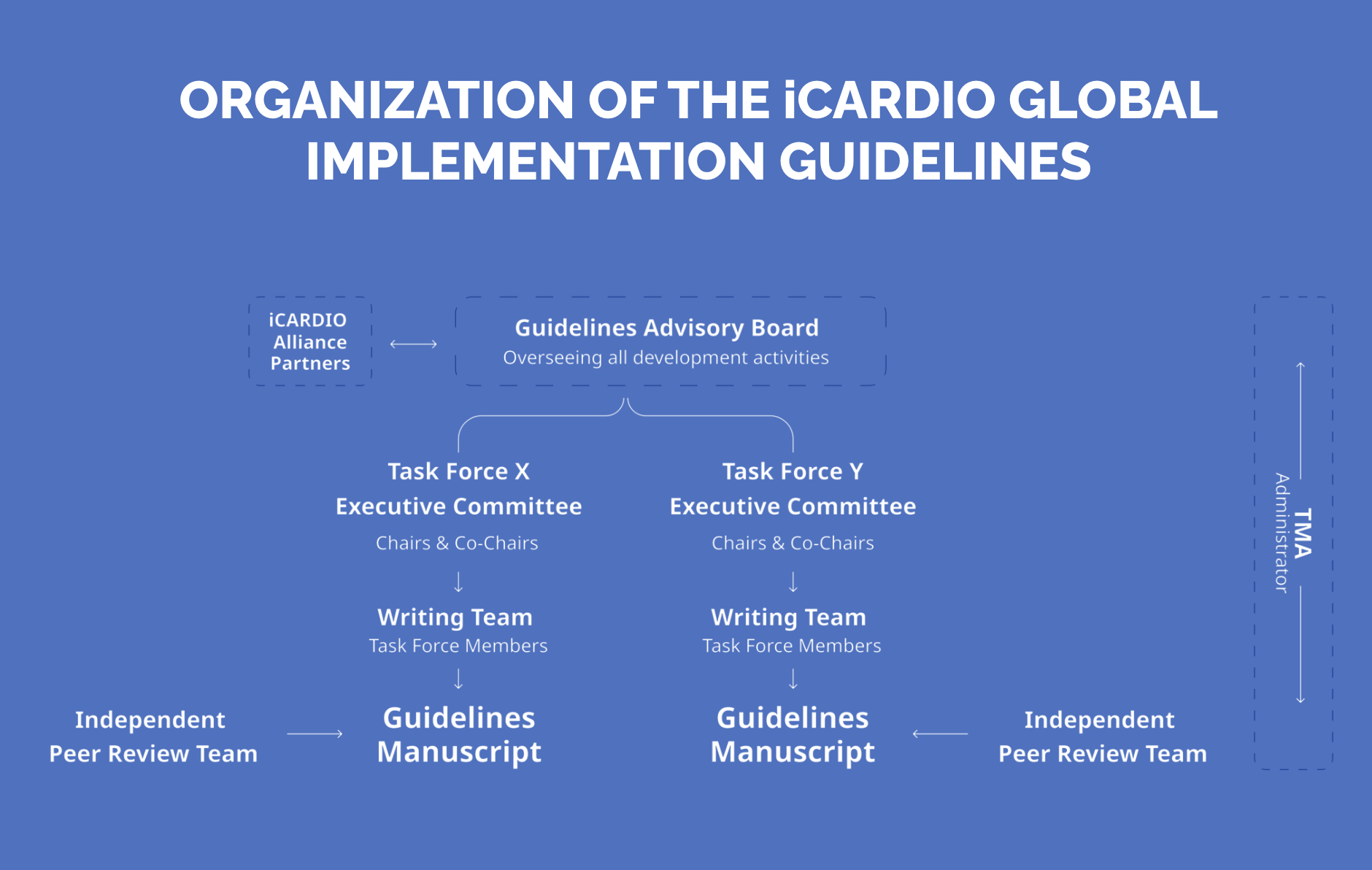Draft Document for Public Consultation: iCARDIO Alliance Global Implementation Guidelines on Obesity Management 2025

All claims expressed in this article are solely those of the authors and do not necessarily represent those of their affiliated organizations, or those of the publisher, the editors and the reviewers. Any product that may be evaluated in this article or claim that may be made by its manufacturer is not guaranteed or endorsed by the publisher.
Similar Articles
- Fausto J. Pinto, Stefan D. Anker, William T. Abraham, John J. Atherton, Javed Butler, Vijay Chopra, Andrew J.S. Coats, Yann Colardelle, Maria Rosa Costanzo, Veronica Dean, Gerasimos Filippatos, Martha Gulati, Julio Rosenstock, John Teerlink, Subodh Verma, Jose Luis Zamorano, Yuhui Zhang, Shelley Zieroth, The Global Implementation Guidelines Initiative: how to optimize cardio-renal-metabolic care worldwide , Global Cardiology: Vol. 3 No. 1 (2025)
- Vijay Chopra, Muhammad Shahzeb Khan, Magdy Abdelhamid, William T. Abraham, Offer Amir, Stefan D. Anker, John J. Atherton, Fernando Bacal, Ralph Stephan von Bardeleben, Dulce Brito, Lucrecia Maria Burgos, Javed Butler, Maria Rosa Costanzo, Albertino Damasceno, Justin A. Ezekowitz, Ishaque Hameed, Sivadasanpillai Harikrishnan, Tiny Jaarsma, Anuradha Lala, Ileana L. Piña, Clara Saldarriaga, David Sim, John R. Teerlink, Nqoba Tsabedze, Hiroyuki Tsutsui, Jing Yu, Yuhui Zhang, Mohammad Zubaid, Nikhil Balankhe, Juan Esteban Gomez-Mesa, James L. Januzzi, Marvin Konstam, Rhonda Monroe, Elijah Ogola, Vinayagam Palaniappan, Mark C. Petrie, Fausto J. Pinto, Girish C. Rajadhyaksha, Amina Rakisheva, Carlos E. Ramos, Victor Rossel, Naoki Sato, P. Christian Schulze, Andrew Sindone, Hadi N. Skouri, Harriette G.C. Van Spall, Aistė Štaraitė, Lynne Warner Stevenson, Kadhim Sulaiman, Tzung-Dau Wang, Michael Böhm, Andrew J.S. Coats, Shelley Zieroth, iCARDIO Alliance Global Implementation Guidelines on Heart Failure 2025 , Global Cardiology: Vol. 3 No. 2 (2025)
- Writing Task Force | iCARDIO-Alliance, Draft Document for Public Consultation: iCARDIO Alliance Global Implementation Guidelines on Heart Failure 2025 , Global Cardiology: Vol. 2 No. 4 (2024)
- Asija Začiragić, Marija Mikić, Amela Dervišević, Orhan Lepara, Nesina Avdagić, Nermina Babić, Almir Fajkić, Amina Valjevac, Neck-to-height ratio in Bosnian university students according to the 2017 American College of Cardiology/American Heart Association guidelines on hypertension classification , Global Cardiology: Vol. 2 No. 1 (2024)
- Shelley Zieroth, Fausto Pinto, Stefan D. Anker, William T. Abraham, John J. Atherton, Javed Butler, Vijay Chopra, Andrew J.S. Coats, Martha Gulati, Tammy L. Kindel, José Luis Zamorano, Yuhui Zhang, Linong Ji, Yann Colardelle, Richard B. Weiskopf, Applicability of obesity clinical practice guidelines in low- and middle-income countries , Global Cardiology: Vol. 3 No. 2 (2025)
- Ali A. Youssef, Shaima Al-Omani, Mustafa A. Alrefae, Ahmad Suliman, Reem Hassan, Omar Saleh, Zizi S. Khalifa, New left ventricular thrombus and embolic events in left ventricular dysfunction postmyocardial infarction , Global Cardiology: Vol. 2 No. 3 (2024)
- Konstantinos Stamos, Theodora Delaporta, Antonios Delaportas, Bridging the gap: integrating stress echocardiography, iFR, CFR, and FFR in the evaluation of coronary artery disease , Global Cardiology: Vol. 3 No. 1 (2025)
- Elena Efremova, Alexander Shutov, Adherence to lifestyle therapy in patients with chronic heart failure and comorbidity , Global Cardiology: Vol. 1 No. 1 (2023)
- Arif Albulushi, Lama S. Alfehaid, Mosaad Alhussein, Amr Youssef, Evaluating serum galectin-3 binding protein as a diagnostic and prognostic biomarker in pulmonary arterial hypertension: a comparative study , Global Cardiology: Vol. 2 No. 4 (2024)
- Kamilu M. Karaye, Idris Y. Mohammed, Okechukwu S. Ogah, Basil N. Okeahialam, Rationale and design for the peripartum cardiomyopathy in Nigeria (PEACE) registry , Global Cardiology: Vol. 1 No. 1 (2023)
You may also start an advanced similarity search for this article.









